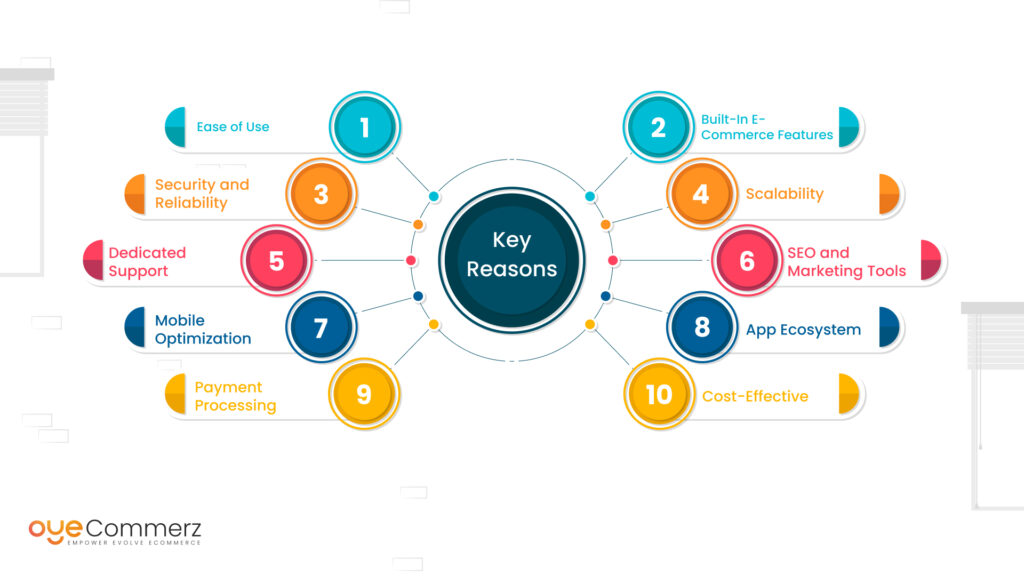Seamless WP to Shopify Migration: Your Definitive Guide to E-commerce Success
Seamless WP to Shopify Migration: Your Definitive Guide to E-commerce Success
Blog Article
Shifting from WordPress to Shopify is an promising step in optimizing your online store operations. As businesses expand, choosing a solution that aligns with growth potential, user experience, and flexibility becomes crucial. Shopify is widely recognized as a favorite for e-commerce professionals, offering unmatched adaptability, data protection, and user-friendliness. In this guide, we will delve into the transformative impact of this migration, discuss the benefits, and provide actionable steps to ensure a smooth transition.
1. Why Migrate from WP to Shopify?
The combination of WordPress and WooCommerce, has served countless e-commerce platforms. However, as companies expand, issues like reliance on plugins, data risks, and complex setups often obstruct growth. Shopify, specifically created for e-commerce, addresses these issues with an all-in-one, intuitive solution. Statistics supports this transition—Shopify powers over 4.4 million websites globally, with a reported 10% increase in sales performance for many businesses post-switch.
2. Key Benefits of Shopify for E-commerce Success
Shopify’s powerful platform is tailored for scaling brands. Its standout benefits are:
- Seamless Customization: Shopify provides over 80 professionally designed themes.
- Integrated Tools: Capabilities such as Shopify Payments and built-in SEO streamline operations.
- Global Reach: Multi-currency support and regional customization empower brands to reach global markets.
Additionally, Shopify boasts an availability percentage of 99.98%, ensuring your website remains accessible.
3. Preparing for WordPress to Shopify Migration
Prior to starting the migration process, assess your current store. Analyze inventory details, client information, and search engine rankings. Tools like Shopify’s Migration Kit or external tools can simplify this process. Create a comprehensive plan, making sure all resources—item details, images, and articles—are ready for seamless import.
4. Data Migration: A WordPress online store to Shopify Critical Step
Transferring your data forms the foundation for a successful platform switch. When migrating from WP to Shopify, focus on:
- Inventory Details: SKU, item summaries, and categories.
- Client Information: Emails, order history, and custom fields.
- Search Engine Considerations: Retain meta tags, URLs, and redirects to maintain search rankings.
Use tools such as LitExtension to facilitate seamless migration while minimizing errors.
5. Customizing Your Shopify Store
Post-migration, customizing your Shopify store ensures it aligns with your business identity. Take advantage of Shopify’s intuitive page builder to design pages effortlessly. Shopify's templates are mobile-responsive, ensuring a seamless UX across Product data migration platforms—a key point, since 74% of e-commerce traffic is generated by mobile visitors.
6. Maintaining SEO During Migration
SEO is vital for maintaining your online presence during migration. Shopify is highly optimized for search engines with organized link formatting, preloaded features, and smooth content management. Ensure:
- Implement 301 redirects for old URLs.
- Optimize new pages with keyword-rich content.
- Use Shopify's apps Plug in SEO to monitor performance post-migration.
7. Post-Migration Testing
Once the migration is complete, conduct thorough testing.
Check: - Website speed (Shopify delivers faster speeds in contrast with WordPress).
- Payment integration reliability and transaction flow.
- Adaptability across devices.
Quality assurance ensures your store delivers a smooth shopping journey from day one.
8. Case Study of a Successful Migration
An example of effective platform switching is Gymshark, a sportswear company that transitioned to Shopify. After the switch, the company experienced a 60% boost in mobile sales and significantly lowered site downtime. This showcases the potential of Shopify in driving online business success.
9. Challenges and Solutions
Migration comes with challenges, such as information accuracy and reconfiguring custom functionalities. However, Shopify’s extensive assistance and third-party experts simplify the process. Collaborating with qualified Shopify developers ensures a trouble-free transition.
10. Making the Switch: The First Step Toward Success
Switching from WordPress to Shopify marks a strategic decision to online retail. By focusing on growth, simplifying management, and enhancing the customer experience, Shopify enables companies to succeed in challenging industries.
Final Thoughts
Transitioning from WordPress to Shopify is a strategic move that can significantly boost your e-commerce success. With a robust migration plan, the appropriate resources, and professional guidance, you can achieve new success milestones.
Ready to make the leap? Let’s discuss how our Shopify migration services can revolutionize your e-commerce platform. Get in touch today, or consider: Is it time to seize Shopify’s advantages for your store?
 Report this page
Report this page